Réalisation
Direction de mouvement
This project is a research on the suspension of a body, through a multidisciplinary study.
Dance, “a poem freed from the apparatus of the scribe” according to Mallarmé, is often considered as an ephemeral art, abolishing the written trace and condemning the dancer to the space and the moment. As soon as it is generated, as soon as it is finished, the gesture vanishes, leaving no trace. The movement is composed and decomposed almost simultaneously, the disappearance of the choreography is instantaneous, resembling a desire to disappoint any attempt to fix an image.
To this ephemeral and performative character of the dance is added a play on the suspension which makes the capture of the movements even more complex. The sus-pension (hanging from above) calls for our relationship to gravity, when no pressure is exerted and we seem to “float”. The course of movement is momentarily interrupted, leaving the body in an unstable in-between state where neither time nor gravity has any effect on it.
How, then, to capture the movement and anchor this art which is by essence ephemeral? How to leave a trace of a fleeting moment, of a suspended body?
These questions have inspired several artists who have tried to capture this evanescent gesture through various media and techniques.
Photography as a capture of the moment
Dance and photography seem at first sight to be antinomic. One is the art of movement that develops in space and time, fading away as soon as it is created, while the other captures an instant outside of time and inscribes it on a medium, complicating the retransmission of a continuum of nuances.
However, dance sometimes gives an impression of non-weight where time seems suspended in a global vision of movement and some photographers have tried to capture this in-between where the body abandons itself to the flow of the movement to come.
This is the case of Charlotte Rudolph, a German photographer from the beginning of the 20th century, who was a pioneer in the art of capturing dancers in motion. She modeled her work on her friend Gret Palucca, a student of Mary Wigman, a leading figure in German expressionist dance. With her pictures, the photographer tries to show these transitory moments as passages of failure.
Drawing as an abstraction of gesture and the essence of movement
In 1926, Wassily Kandisky used Chalotte Rudolph’s photographs of Gret Palucca to create the four “analytical drawings” published in the art magazine Das Kunstblatt. These drawings are reproductions of the photographer’s photographs by means of shapes, roundings, and lines that suggest movement. Kandinsky defines the line as “the imprint of energy - the visible trace of the invisible”. The organic form of the painting “fades away” and the abstract forms take on meaning. These signs, not static, but in motion, render the dynamism of the body through the line.
This abstraction of the danced movement then suggests this in-between, this transitory state of suspension.
Dance notation as a trace of suspension
Dance notation, or the writing of gestures, is a process of recording movement in writing. Through drawn signs, it seizes the movement and anchors it on a support.
This becomes a trace, capable of crossing time and continents, but it does not freeze it.
Since the 15th century and probably even earlier, practitioners and theorists have sought to transcribe movement. Each era has thus developed its own notations to transmit a particular gestural repertoire. These “traced dances” according to the expression of Laurence Louppe, seem to disprove the axiom of Mallarmé́ who spoke of an art “freed from the apparatus of the scribe”.
Thus the XXth century saw the birth, of several writing systems including the Benesh notation that will be used in this project. This writing of the movement allows to capture poses but also moments of suspension, by essence momentary, to register them in a universal language, which transforms the ephemeral into heritage.
CREDITS
Casting : Shanti Mouget
Movement director : Lola Rudrauf
Production : Emma Le Goff
Photography : Emma Boudon
Assistant.e.s : Esther Balibar, Austin Decarsin, Vincent Taraud
Stylism : Arnaud Chartouni
Make-uo : Clara Barban Dangerfield
Hair : Wendy Margry
Drawing and notation : Lola Rudrauf
Garphism : Sylvain Julé
Thanks to : Leila Nour Johnson, Agèle Lepolard, Midi 25, Maïa Dubois, Fringale

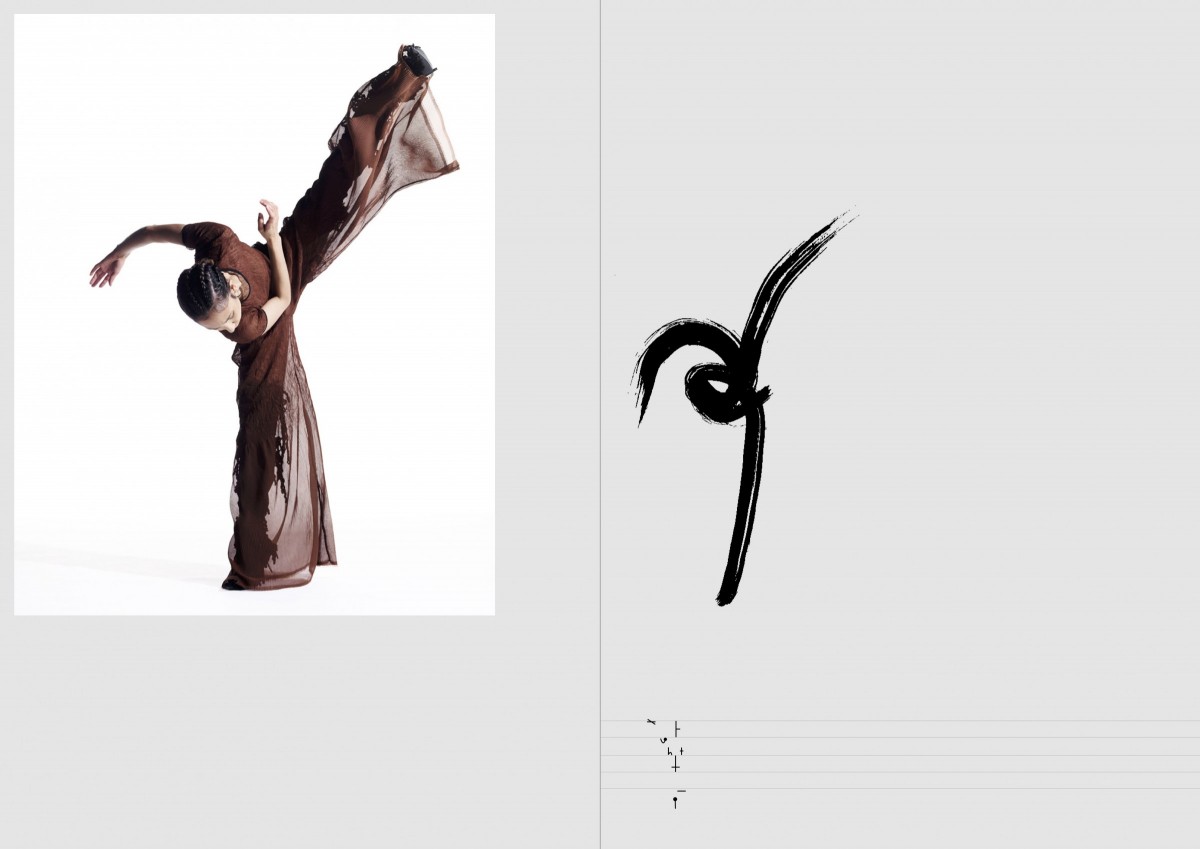

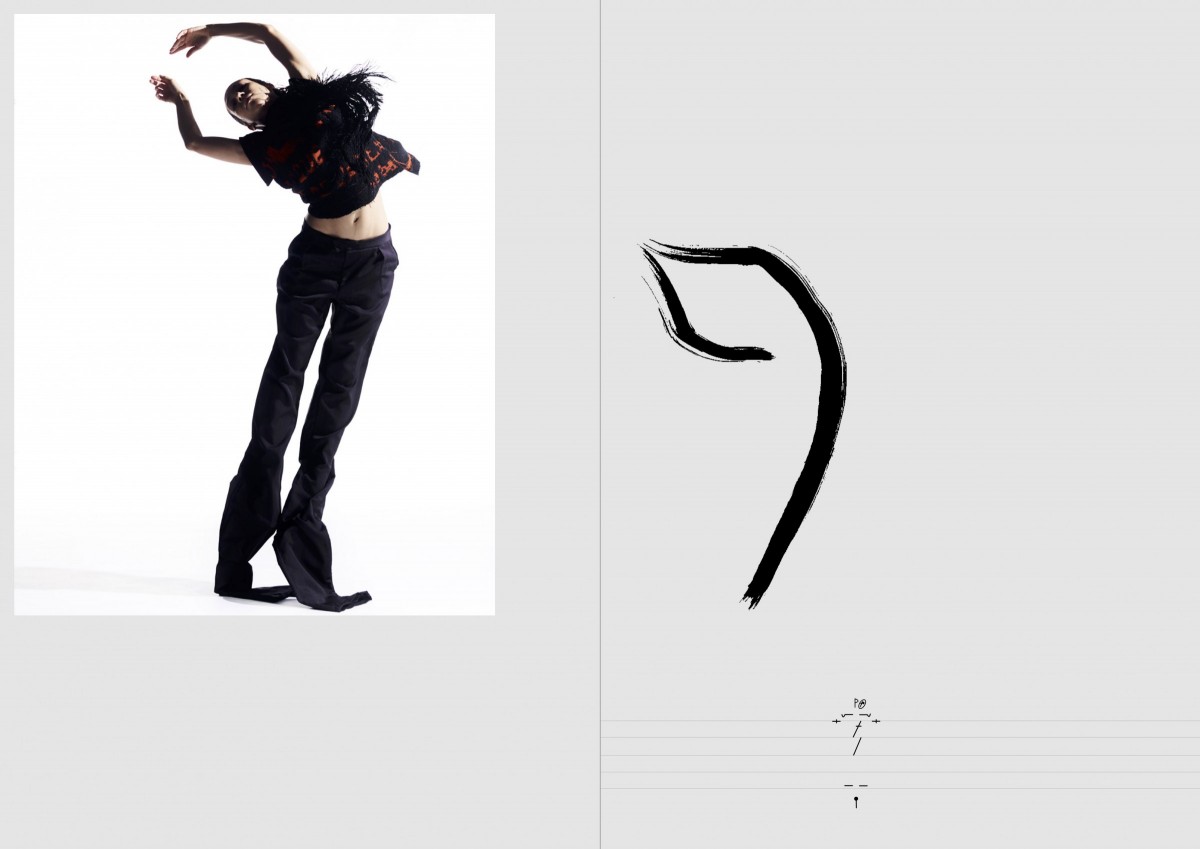

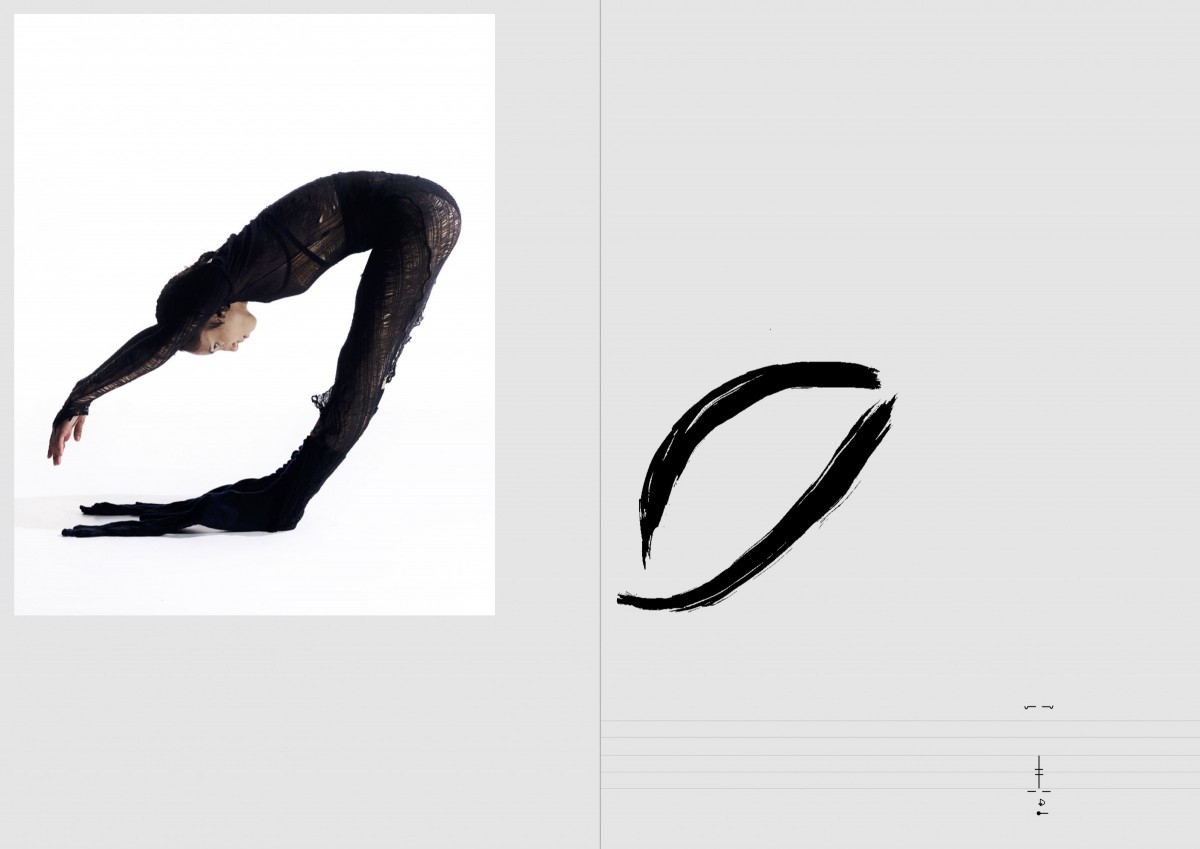
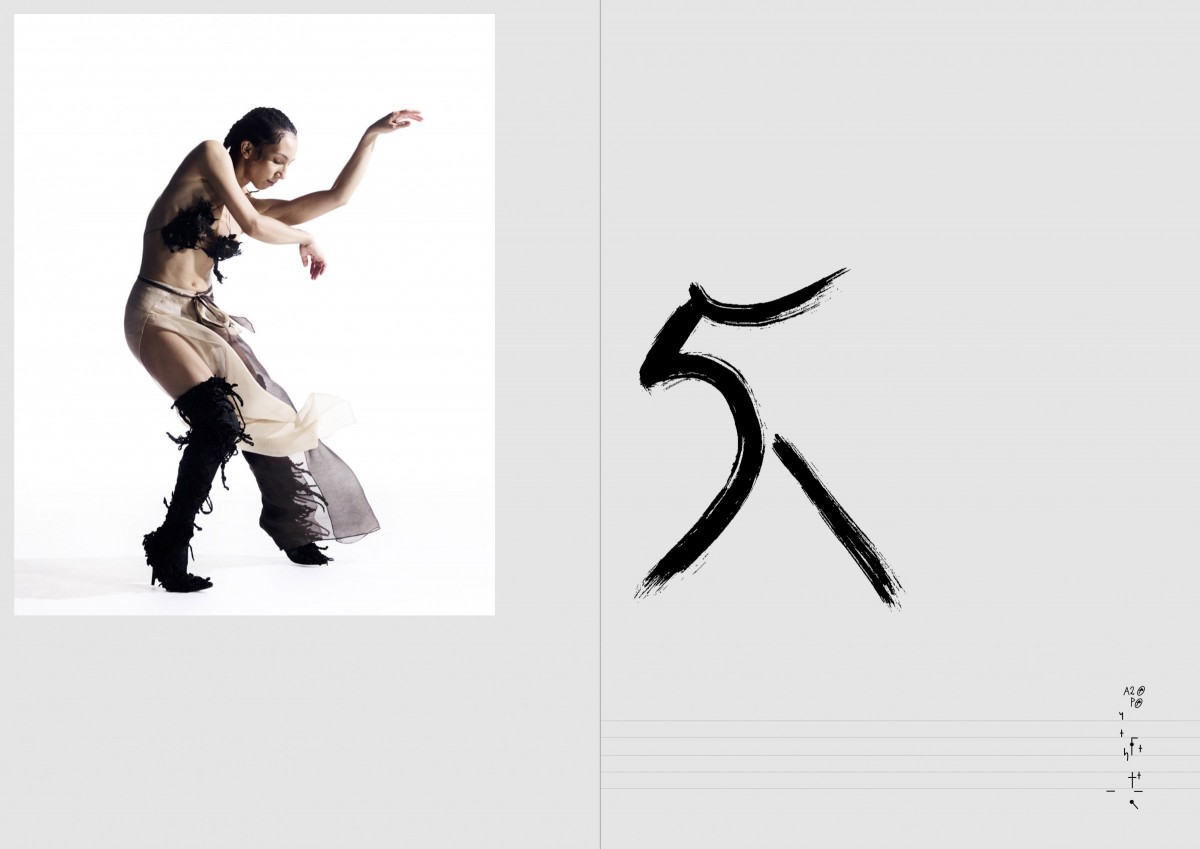
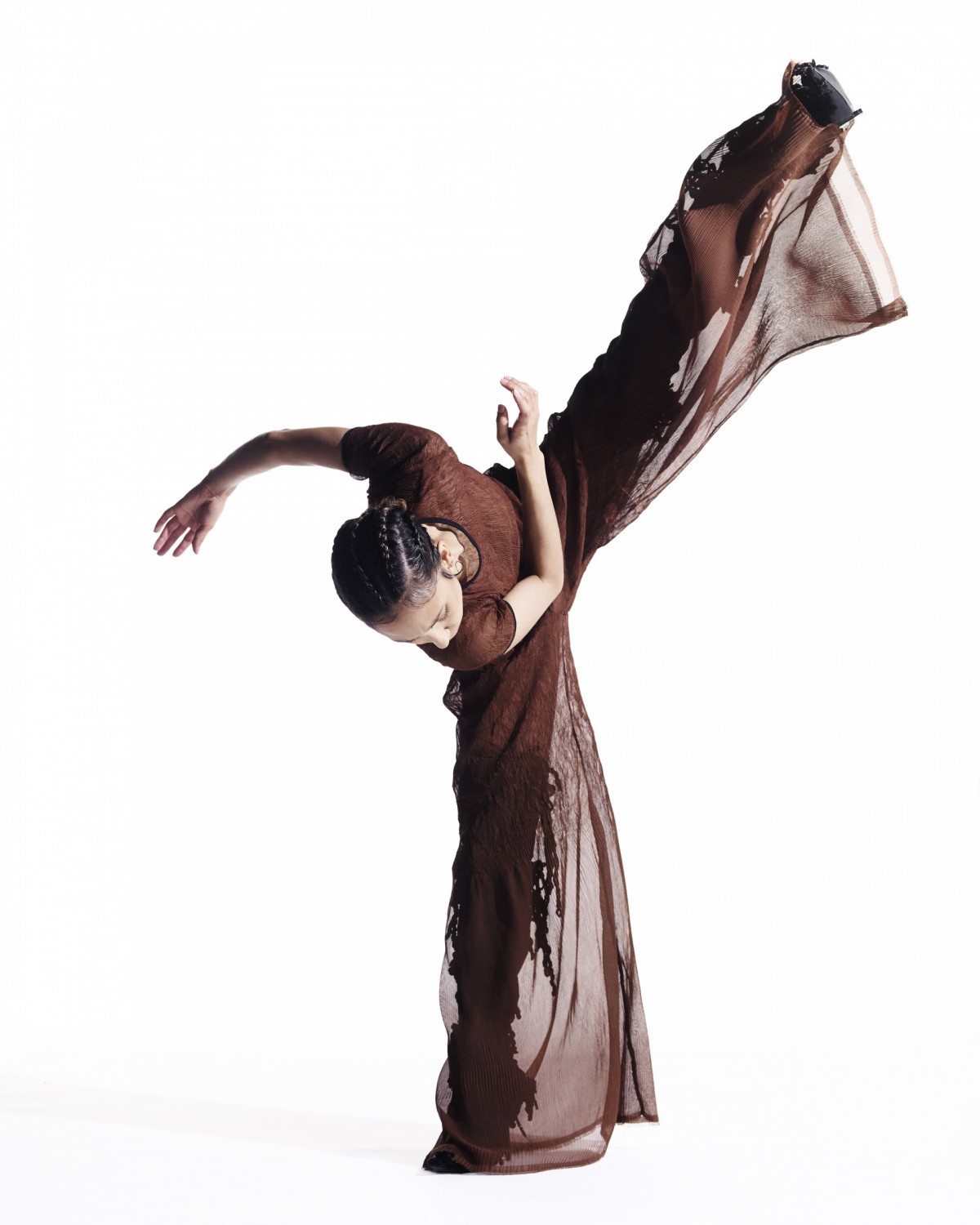
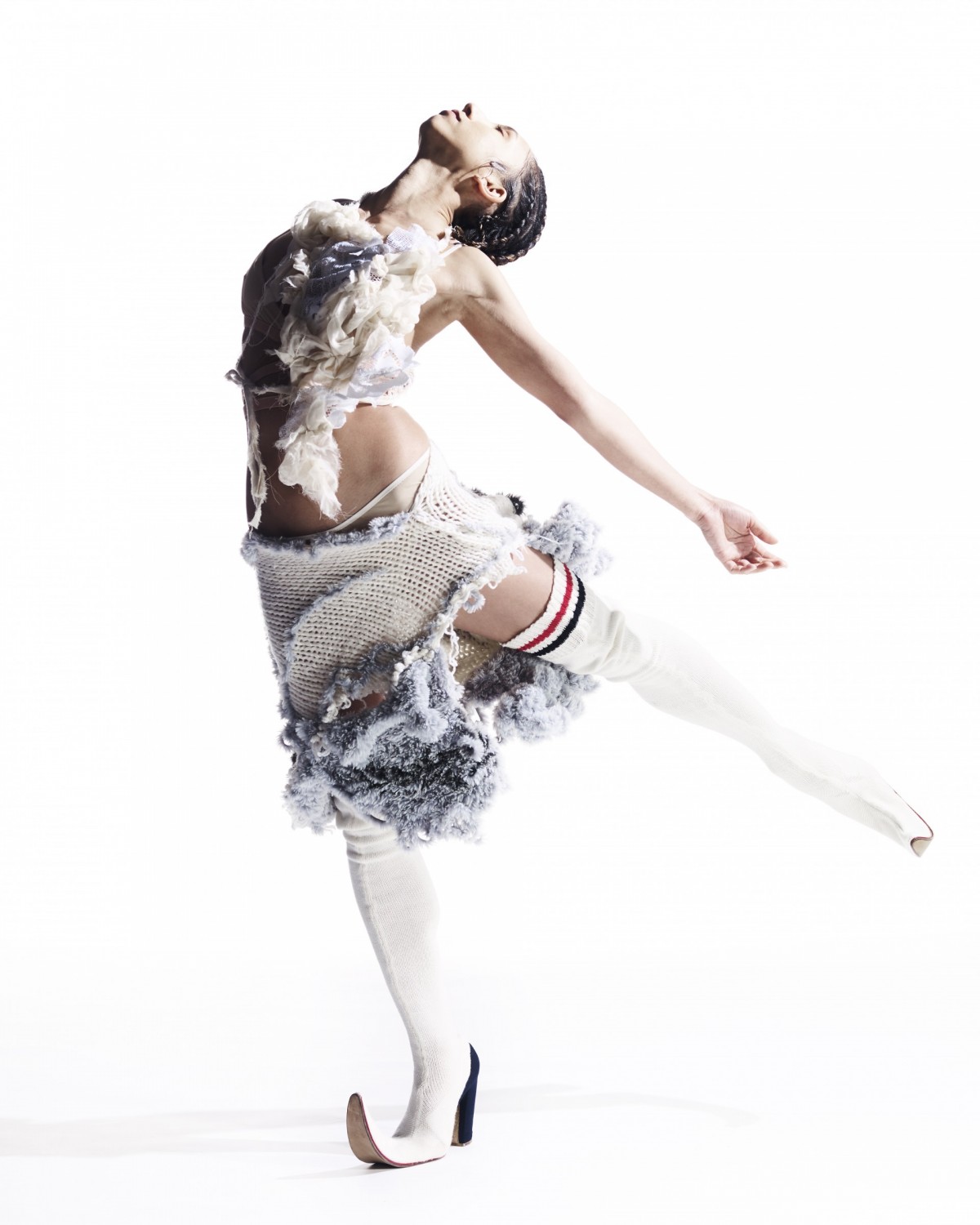
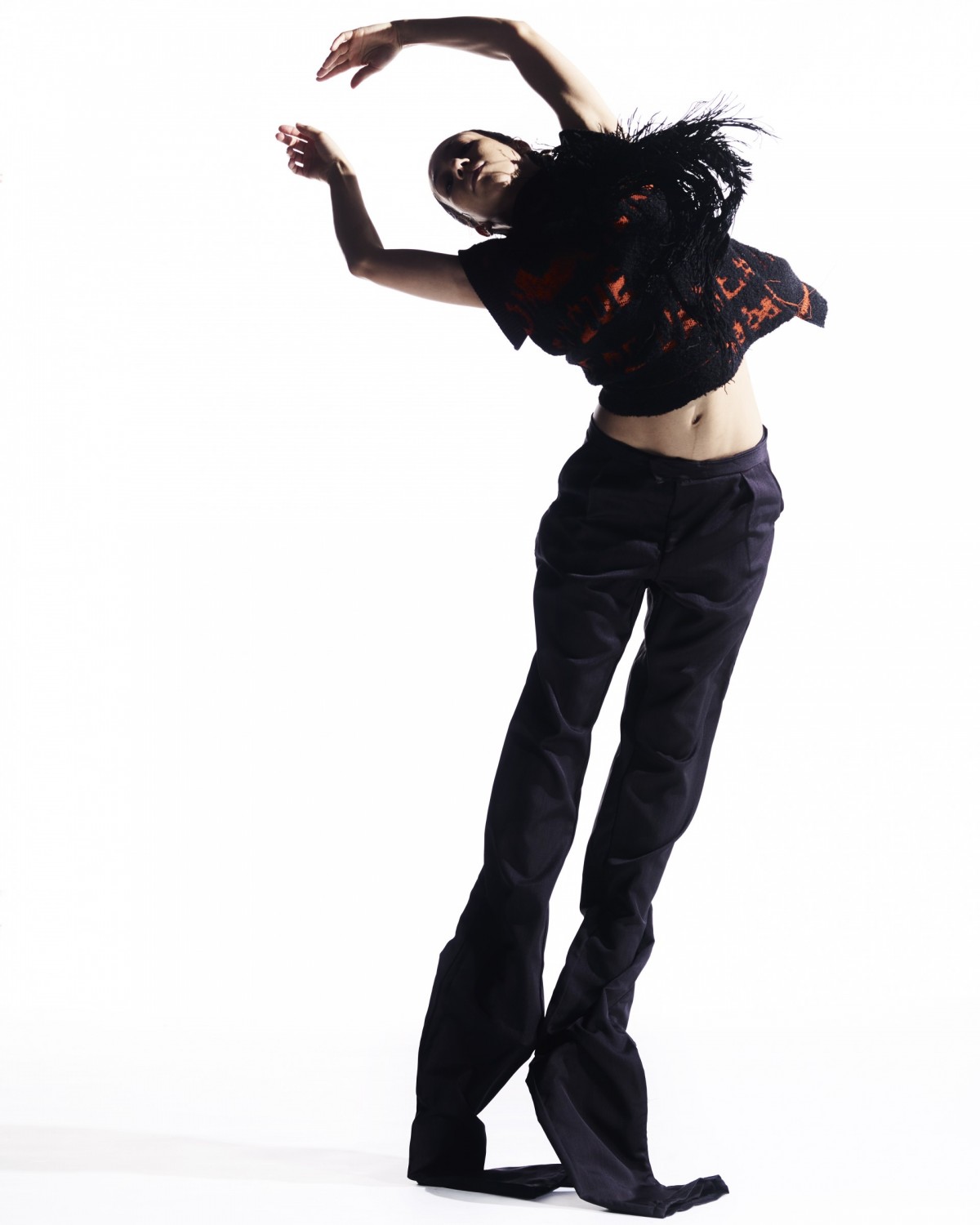

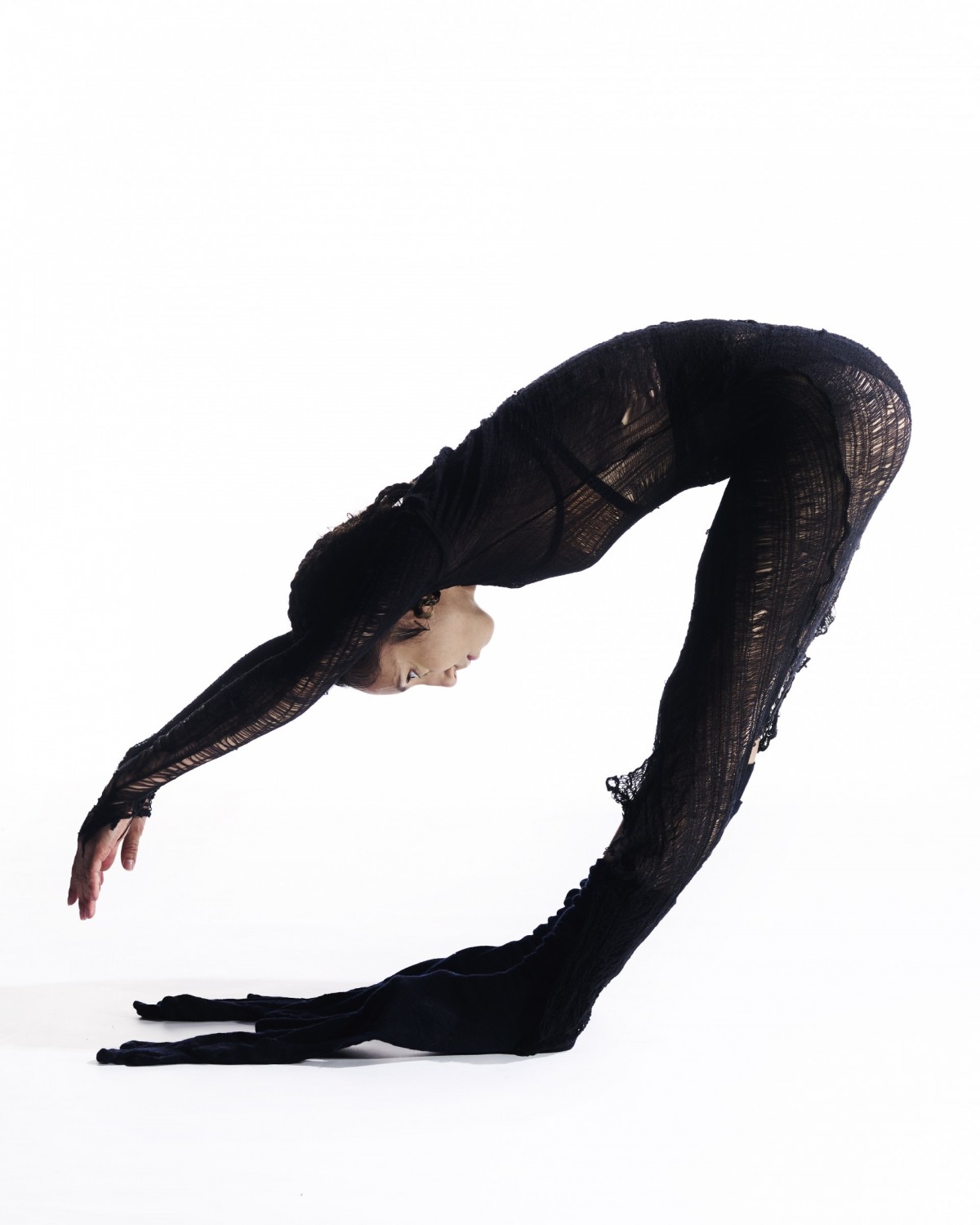
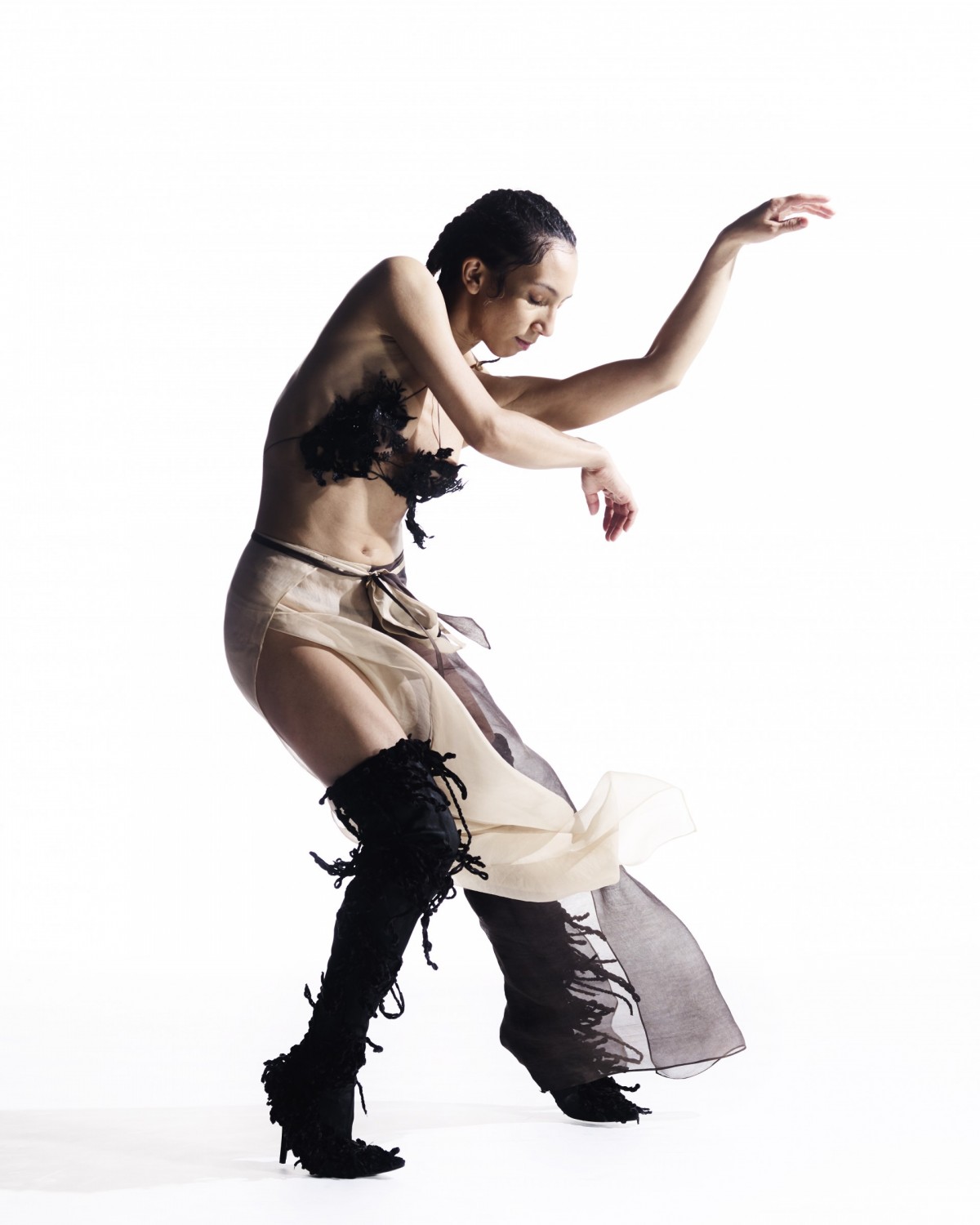
Réalisation
Direction de mouvement
This project is a research on the suspension of a body, through a multidisciplinary study.
Dance, “a poem freed from the apparatus of the scribe” according to Mallarmé, is often considered as an ephemeral art, abolishing the written trace and condemning the dancer to the space and the moment. As soon as it is generated, as soon as it is finished, the gesture vanishes, leaving no trace. The movement is composed and decomposed almost simultaneously, the disappearance of the choreography is instantaneous, resembling a desire to disappoint any attempt to fix an image.
To this ephemeral and performative character of the dance is added a play on the suspension which makes the capture of the movements even more complex. The sus-pension (hanging from above) calls for our relationship to gravity, when no pressure is exerted and we seem to “float”. The course of movement is momentarily interrupted, leaving the body in an unstable in-between state where neither time nor gravity has any effect on it.
How, then, to capture the movement and anchor this art which is by essence ephemeral? How to leave a trace of a fleeting moment, of a suspended body?
These questions have inspired several artists who have tried to capture this evanescent gesture through various media and techniques.
Photography as a capture of the moment
Dance and photography seem at first sight to be antinomic. One is the art of movement that develops in space and time, fading away as soon as it is created, while the other captures an instant outside of time and inscribes it on a medium, complicating the retransmission of a continuum of nuances.
However, dance sometimes gives an impression of non-weight where time seems suspended in a global vision of movement and some photographers have tried to capture this in-between where the body abandons itself to the flow of the movement to come.
This is the case of Charlotte Rudolph, a German photographer from the beginning of the 20th century, who was a pioneer in the art of capturing dancers in motion. She modeled her work on her friend Gret Palucca, a student of Mary Wigman, a leading figure in German expressionist dance. With her pictures, the photographer tries to show these transitory moments as passages of failure.
Drawing as an abstraction of gesture and the essence of movement
In 1926, Wassily Kandisky used Chalotte Rudolph’s photographs of Gret Palucca to create the four “analytical drawings” published in the art magazine Das Kunstblatt. These drawings are reproductions of the photographer’s photographs by means of shapes, roundings, and lines that suggest movement. Kandinsky defines the line as “the imprint of energy - the visible trace of the invisible”. The organic form of the painting “fades away” and the abstract forms take on meaning. These signs, not static, but in motion, render the dynamism of the body through the line.
This abstraction of the danced movement then suggests this in-between, this transitory state of suspension.
Dance notation as a trace of suspension
Dance notation, or the writing of gestures, is a process of recording movement in writing. Through drawn signs, it seizes the movement and anchors it on a support.
This becomes a trace, capable of crossing time and continents, but it does not freeze it.
Since the 15th century and probably even earlier, practitioners and theorists have sought to transcribe movement. Each era has thus developed its own notations to transmit a particular gestural repertoire. These “traced dances” according to the expression of Laurence Louppe, seem to disprove the axiom of Mallarmé́ who spoke of an art “freed from the apparatus of the scribe”.
Thus the XXth century saw the birth, of several writing systems including the Benesh notation that will be used in this project. This writing of the movement allows to capture poses but also moments of suspension, by essence momentary, to register them in a universal language, which transforms the ephemeral into heritage.
CREDITS
Casting : Shanti Mouget
Movement director : Lola Rudrauf
Production : Emma Le Goff
Photography : Emma Boudon
Assistant.e.s : Esther Balibar, Austin Decarsin, Vincent Taraud
Stylism : Arnaud Chartouni
Make-uo : Clara Barban Dangerfield
Hair : Wendy Margry
Drawing and notation : Lola Rudrauf
Garphism : Sylvain Julé
Thanks to : Leila Nour Johnson, Agèle Lepolard, Midi 25, Maïa Dubois, Fringale